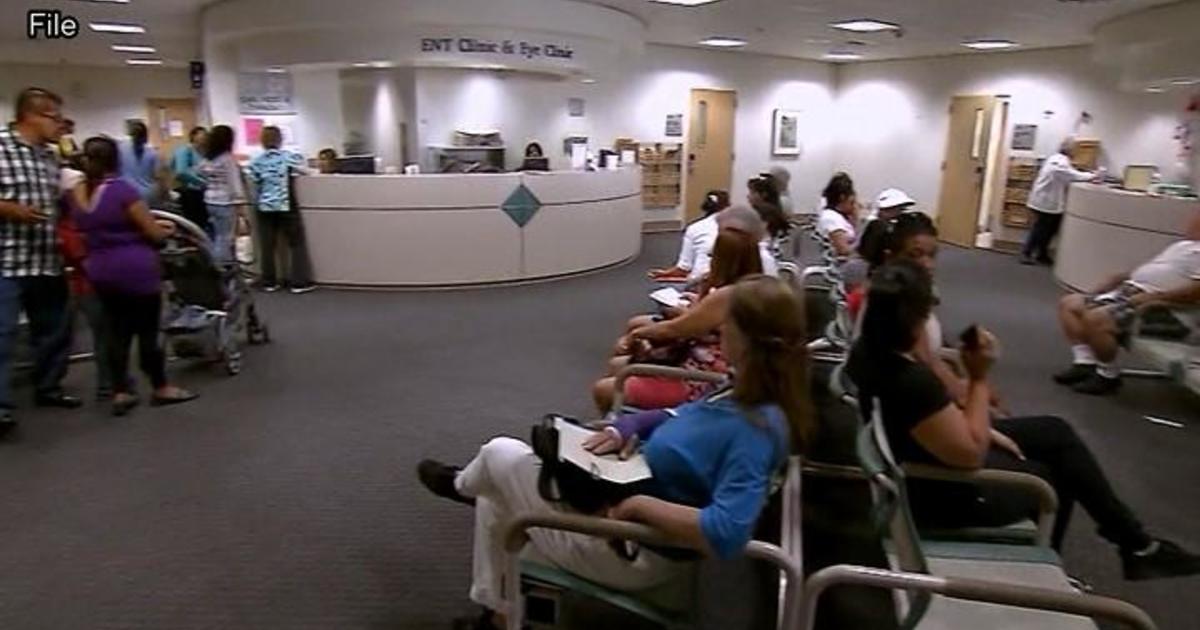Church's Sewing Circle Stitches Threads Of Love
By BRICE STUMP
The Daily Times of Salisbury
SNOW HILL, Md. (AP) -- Janine Dufrene's fingers gingerly guided her needle into the soft, cotton face of the quilt stretched on a quilting frame.
Around her, half a dozen ladies worked, their short, even stitches creating textured designs in the open fields of white on the bed covering.
Every stitch came with smiles, conversation, love and fellowship. Just as it should be at the monthly sewing circle at the Snow Hill Mennonite Church.
Only one in the room has been here since the group began serving their community in 1953. Barbara Kurtz, 85, sat at the frame, her fingers slowly, gingerly, working to add another stitch to the design before her. Her daughter, Mary Hostetler, who sat beside her, helped her mother rethread the needle.
Quilting has been a mainstay of church women of various denominations over the years. Yet here, in the countryside of open fields and forests of Worcester County, quilting has spiritual overtones. It comes with a shared interest in sewing that brings strangers, family and church members together.
It may appear that the work at hand is just about quilting, but there is something much more important.
"What we do is to glorify God and to bless others," said long-time member Jane Stoltzfus Eby.
Perhaps it is the church atmosphere, maybe it is the women or the rural setting, but a warm peace flows through the room, over the quilt in the making and into the hearts of the women. Since 1953, someone has been here, stitching threads of love into quilts and comforters.
"In the early years, women made clothing for local needy people, flannel baby layettes (blanket, baby gown, diapers and bibs) and they crocheted booties," said Eby, who began watching the women quilt here when she was just 8. "Women also took (livestock and chicken) feedbags and trimmed and hemmed them to become sheets and bolsters.
"That was soon followed by the making of comforters and quilts. Most were sent to a Northern Light Gospel Mission in Canada that worked with American Indians. Now we send the comforters we make to Christian Aid Ministries. We give comforters to local people, when needed," she said.
Comforters require far less time to make, use bigger patches of fabric and are knotted to bind the front back and center sections together. As one group quilted, another tied knots in comforters.
"We quilt for people and they pay us, which all goes to the quilting-comforter project here at the church," Eby said. "The money is used to buy more supplies for comforters and quilts, as well as the significant shipping charges when comforters are sent overseas."
For years, folks have brought pieced tops to the sewing group to have the women hand stitch decorative designs in the tops to bind all three sections together. It is the cutting, fitting and hand sewing of hundreds of individual pieces of a quilt top that demands precision work. For whatever reasons, tops (unfinished quilts) end up in attics, stored in blanket chests, drawers and even closets for decades, before they are finally finished by strangers.
Margaret Cylc had a top made by a late aunt, said to have been made of pieces of housedresses, that was finished by the group years ago. Now it has become a family heirloom.
"If we have an evangelist come and spend a week, we will give a quilt as a thank-you gift. We also give them to missionary families or donate them to other Mennonite churches to be used in their fundraisers. We also make them for our friends and relatives," Eby said.
The group also finishes "friendship quilts."
"One person will cut out squares and they are passed out to friends and relatives. They embroider whatever they want on the square and return it. We piece it together and quilt it," Jane said.
What was once piles of cut squares are transformed into individual testimonials of love and appreciation.
Today's project at hand was to continue quilting a pieced top, the sections of which had been machine joined.
"This was a wedding gift to Jay and Amy Yoder, a couple here at our church. They have been married for some time, but Amy's mother died last year and we are doing it (quilting) for Amy as a bereavement gift," Eby said.
While finished quilts are intended to be bed coverings, few are used for that purpose. Quilted pieces by the group are friendship letters in fabric, hugs, prayers, tears of joy and condolences expressed in thousands of stitches. It may take a few months, perhaps a year, to finish particular quilting jobs.
"People want to have something special. People don't want a quilt just to have a quilt. They probably know what is involved in making it, and it's special to them," said Nadine Cavey.
When Jane said she hoped to never see one of their quilts used as a blanket on the beach, the ladies voiced their agreement.
"That would be hard," she said; silence followed her words.
The quilt frame is the center of activity, surrounded on four sides by women working with needles, thread and thimbles. The length of each stitch is uniformly short and precise, making for a visually attractive design. Seasoned quilters work as some newcomers watch. Over the years, the sewing circle has demonstrated their quilting skills at Poplar Hill Mansion, the Smithsonian's National Museum of Art, Furnace Town, Purnell Museum and at the Worcester County Fair.
The guests, who laughingly call themselves "outsiders," are referred to as "visitors" by the church's core quilting and comforter making group. What brings visitors here is as varied as problems and needs of individuals. Some want to learn the skills, others need to talk, some want to listen.
"I don't sew," said Margaret Cylc, "but I cut squares to be used in the comforters."
Janet Carter doesn't quilt, but has been coming for the fellowship.
"I keep going back because they are a wonderful group of ladies, they really are," Carter said. "You don't have to have a talent for quilting to come. If you want to come, watch, sew or learn, just show up. Because it's a sewing circle, you can bring knitting, crocheting, embroidery or your own sewing projects to work on."
Some are accomplished seamstresses, like Cavey, and Edna Bennett, who made her own wedding dress. As for Jane, she made the wedding dress for her daughter, Elaine Kauffman, and her attendants.
"It was a sewing time," Jane said, smiling. "What I did first was to make the pattern, than made a 'practice dress' for each girl, from sheets. Then I used those sheet dresses, with alterations, to make the real dresses."
The ladies laughed when they learned the dress sheets were cut into squares for making quilts. It's all about a shared love.
"This is not about joining the church, it is about coming," Jane said. "Several of the ladies here are members of the Snow Hill Mennonite Church, but I describe this as the 'sewing circle at the church.' We have people come in to visit and sometimes that stay, even though they are not church members. Everyone is invited, regardless of their denomination."
Each second Tuesday of the month, the ladies come, from 10 a.m. until 3 p.m.
One day each month, in the morning, a stranger may take a seat around the quilting frame at church. By lunch, all eat as friends. Conversation is savored and enjoyed.
"We talk about our lives, find out what our families are doing and share recipes," Jane said.
And they talk about spiritual matters of the heart and soul.
"This is also a spiritual time," said Pauline Eby. "We always have a devotional and share our needs, our prayer concerns."
And so it goes as quilters work, sharing the love of a God that turns strangers into friends. It is the miracle of thread and needle. They put into cloth what's in their hearts.
Each quilter works with a thimble, to push the short, thin, shiny needle through the layers until the sharp point emerges from the underside to gently prick their fingertips.
After years of sewing, some have lost their fingerprints. Some quilters have fingertips that are calloused and cracked, and the prints are no more.
Every now and then a drop of blood drawn by the needle appears on a quilt. For Jane, a touch of peroxide makes it disappear. Peroxide, she said, was the solution to a spotting problem used by fellow nurses when she worked at Peninsula Regional Medical Center in Salisbury.
Another method, suggested by a quilter, is to spit on the drop. Yet there is a special consideration. The spit must be from the one who gave a drop of blood; for some reason it dissipates the color more effectively.
"You don't spit on somebody else's blood," said Cavey, as the women joined her in laughter.
The goal is not to soil any part of the pristine fabric. Even working in summer poses a problem with sweating arms and hands.
There's a calico cotton print on top, a layer of polyester batting and a backing of muslin. The thin sandwich of materials makes for a just-right thickness that allows a needle to slide with a bit of coaxing through all three layers. Over the years, the amount of thread used is measured by the mile.
There are, said Hostetler, some quilt sizes that require 500 yards of thread and hours and hours of work to complete. A finished quilt, depending on size, can run from a few hundred dollars to near $1,000.
"It is a blessing to us to give things away. This is not a profit thing, but a part of church (life)," said Pauline Eby.
But what one gets, said Edna Bennett, is a one-of-a-kind, heirloom work of art.
"When my great uncle died, the ladies in the family gathered up all his shirt ties and made a quilt top with them," Cylc said.
What appeared to be humble bits of used clothing now delights the eye and warms the heart as a quilt.
If the need arises, it is Hostetler who pieces sections of cut fabric together to make the top layer of a quilt. She also selects quilt hand sewing patterns. Hostetler, Barbara Kurtz's daughter, is also teacher at the Mennonite Church School here.
"Probably most of us here could piece the top, but we prefer folks provide the top which we quilt," said Nadine Cavey.
Whether there is a request to quilt an existing top, to custom make one or to finish an heirloom, each project is handled with their full attention.
As they work, conversation ebbs and wanes. The laughter and talking of youngsters at play sometimes fills the brief interludes in conversation. There are times when the topic is punctuated with silence, itself speaking volumes when appropriate.
"What's most important to remember is that we are doing this for the glory of God," Jane said.
That is found in the hospitality, friendship and love a guest can find among needles and thread, quilts and comforters.
(Copyright 2012 by The Associated Press. All Rights Reserved.)



